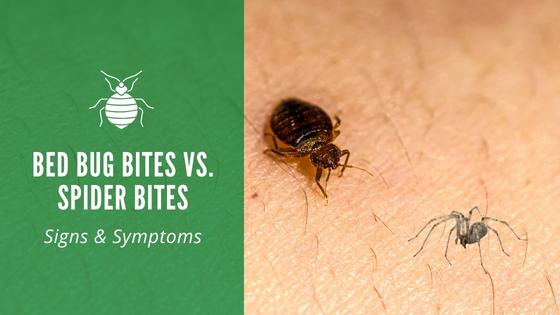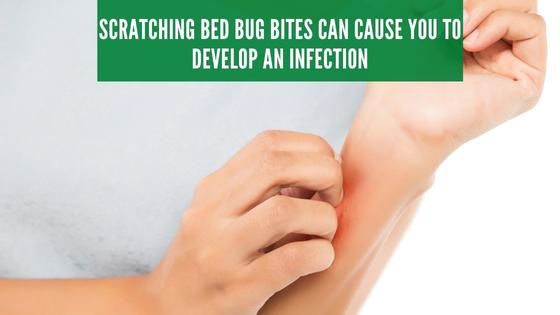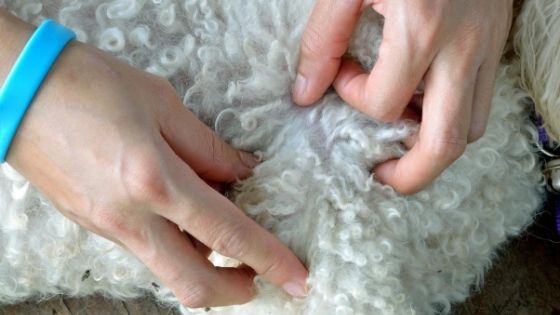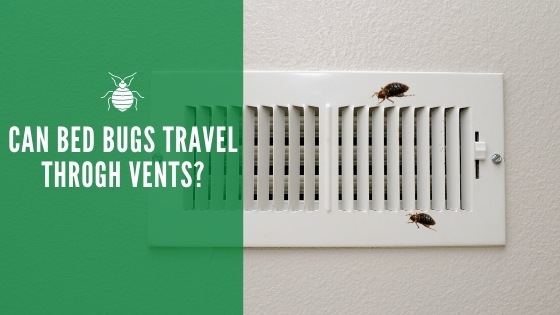Bed Bug Bites Vs. Spider Bites

The idea of any creepy crawly creature biting your skin might be enough to make you cringe, especially when you start worrying about it happening again.
Considering that a recent study found that there are about 131 spiders per every square meter of land, it’s possible that your bite did come from an arachnid.
But, bed bug infestations are also on the rise, and you need to figure out what caused your bite so that you can address the problem. Some bite mysteries never get solved, but you’ll have a better chance of identifying your bite’s source when you follow this guide.
How to Identify Bed Bug Bites
Waking up to a fresh set of bites is concerning, and your first instinct is to blame it on bed bugs. One of the simplest ways to start narrowing down the list of what bit you is to consider the timing so you’re on the right track if you didn’t do anything else but sleep before the bites appeared in the morning.
Compared to a spider bite, bed bugs leave several marks on your skin that might appear in a row or zig-zag pattern. This is caused by them feeding in one spot before traveling to another to continue to get more blood.
On most people, the bites look very similar to mosquito bites. On lighter skin, they’ll be reddish or pink. On darker skin, they may have a lighter pink or brownish-purplish shade.
Most bed bug bites are only about a quarter-inch across, but they can swell up to bigger than two inches if you have a sensitivity that causes them to turn into hive-like welts.
Bed bug bites tend to be itchy, and the level of itchiness can vary from one person to another. But, they shouldn’t be painful.
You’ll usually discover bed bug bites on exposed skin, and sleeping in an infested room more than once can cause more of the bites to appear. Spiders usually only leave one bite, so seeing multiple ones is a strong indicator that it could be from bed bugs.
How to Identify Spider Bites
Bed bugs might view you as a tasty midnight snack, but spiders prefer to leave you alone. Most spiders only bite when provoked and usually try to stay away from humans.
Still, you are at a higher risk of getting a bite in the middle of the day as you engage in outdoor activities or work in areas where they tend to hang out. Although there is a possibility of getting a spider bite while you sleep, it is more likely to happen while cleaning out the garage or basement.
A typical spider bite appears as a single mark on your skin. You’ll sometimes hear that spiders leave two puncture wounds from their fangs, but the ability to see them is a myth. Most spiders are too small to leave visible marks, so don’t automatically blame an arachnid if you notice two spots close together.
In the best-case scenario, you won’t notice many symptoms from a general spider bite. You might have a red mark on your skin and notice some slight itching or pain. These symptoms shouldn’t be severe enough to disrupt your normal activities.
A spider bite from a non-venomous species usually clears up in a few days to two weeks. During that time, you should gradually notice the symptoms going away.
How to Know If the Bite Came From Another Type of Bug
There’s also the need to avoid overlooking other sources of bites. Fleas can leave behind many small red marks on your skin that look like bed bugs attacked you at night.
Usually, flea bites stay around your ankles and lower legs, but they could be anywhere on your body if they’ve infested your bedroom.
Mosquito bites are also commonly blamed on bed bugs. If mosquitos are the culprit, you can probably recall spending a lot of time outdoors before the bites occurred, and it is more likely that you have mosquito bites if you’ve been around bodies of water.
Chiggers are from the arachnid family, but you’ll usually find multiple bites from these bugs, since they come from running into larva in outdoor spaces. You could suspect chigger bites are behind your symptoms if you’ve recently been hiking or camping in the woods or grassy areas where they are known to hang out.
Treating a Bed Bug Bite Vs. Spider Bite
The majority of symptoms that you experience with a bed bug bite are easily managed with proper at-home care. If the bites cause irritating itchiness, you can apply an over-the-counter antihistamine to the affected skin.
Occasionally, people with higher sensitivity to bites may need to visit their doctor for a prescription steroid cream to relieve inflammation and swelling. You might also take an oral antihistamine for bites covering an extensive portion of your skin.
Bed bug bites also respond well to natural remedies that reduce itching and swelling. Cold packs applied to the bites can bring you some relief. You can also make a thin paste of baking soda and water that you can then put on the bites and allow it to dry. Learn more about treating bed bug bites
You’ll want to follow a few additional precautions to prevent infections for spider bites. When you notice the wound, wash the area with soap and water. You can apply a cool compress to the skin for about 15 minutes each hour until you feel comfortable that the swelling is no longer getting worse.
For a mild spider bite, you may only need to apply antibiotic cream or an antihistamine ointment a few times a day until the itching and danger of infection are gone.
Watch for Signs of Complications
Both bugs can lead to more serious symptoms that warrant medical attention. Scratching bed bug bites can cause you to develop an infection.

An infected bed bug bite might develop more redness, swelling, and pain. Oozing bites may also require prescription medications such as antibiotics to clear up.
If you happen to be one of the rare people bitten by a black widow or brown recluse spider, you can rest assured that you will most likely be fine. Only about one death from spider bites occurs every decade, but you will want to take advantage of medical treatments that can help you have the best chance of a full recovery.
Serious symptoms from venomous spider bites usually occur within a few hours after the attack. Black widow bites can cause you to develop systemic symptoms that include muscle spasms, cramps, and vomiting.
Brown recluse bites tend to generate symptoms at the site. A bite that develops a dark red or purple color along with a ring around it could be from a venomous spider. Brown recluse bites can cause tissue death where they occur, so make sure to seek prompt treatment.
At some point, most people will experience some type of bug bite. Yet, spiders and bed bugs can cause recurring bites that lead to potential complications.
Discovering bites regularly is a sign that you might be dealing with an infestation somewhere you spend a lot of time. Clearing up the underlying infestation is the best way to stop the bites from happening again so you can enjoy better overall health.



